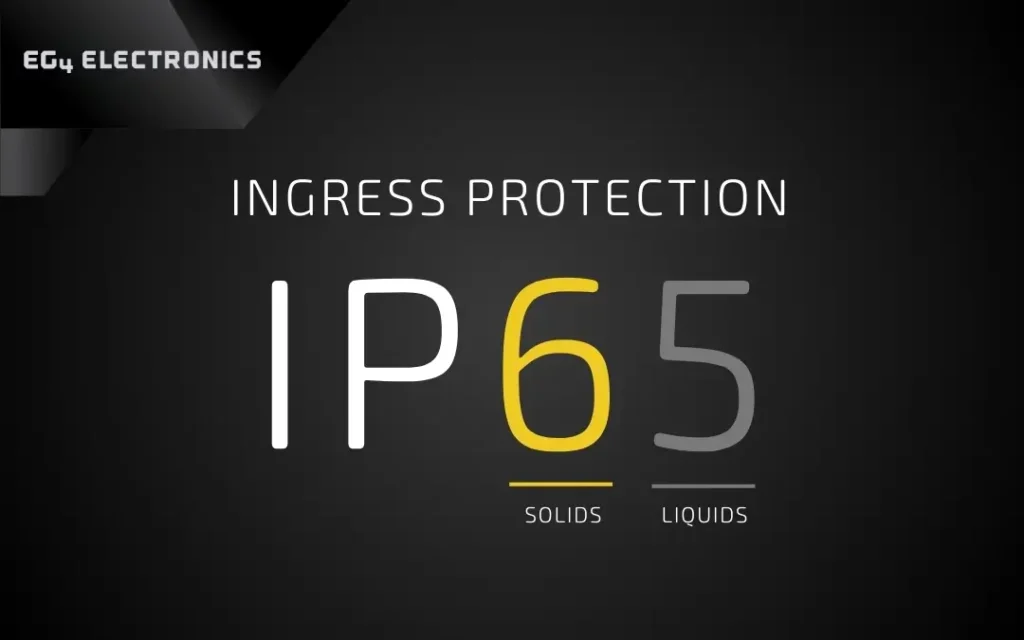In the world of electrical enclosures, the Ingress Protection Code (IP) plays a crucial role in defining a product’s resistance to external elements. The International Electrotechnical Commission (IEC) developed to validate levels of product protection by actual testing the grade of resistance of an enclosure when exposed to particles (like dust) or liquid.
If you’ve come across labels like IP20 or IP65, these alphanumeric codes are key indicators of a product’s ability to fend off dust, solids, and water. The higher the IP rating the less the product needs cleaning and it has less danger from atmospheric conditions such as salt and humidity.
Before a product can proudly display its IP rating, it must undergo rigorous testing to guarantee its reliability in various conditions. An impartial and certified testing process is mandatory. They undergo rigorous testing by independent, certified companies. Key aspects of testing for an IP rating are solid protection, liquid resistance, gasket seals and design evaluation, component-specific testing, and verification of outdoor protection. This testing incurs costs, which may influence the product’s base price. So, when you see an IP65 label, know that it’s not just a number – it’s a testament to a product’s tested and certified resistance against the elements.
Decoding the Numbers
The IP rating consists of two digits, each carrying specific information. The first digit, ranging from 0 to 6, signifies the enclosure’s defense against solid objects. The higher the number, the better the protection – with 6 indicating a product that is “dust-tight.” Moving on to the second digit, which ranges from 0 to 9, it gauges the enclosure’s resistance to liquids. A rating of 9 means the product can withstand close-range high-pressure water jets.
In the realm of electrical enclosures, the IP rating system serves as a beacon, guiding users towards products designed to withstand the elements. Take, for instance, the EG4 PowerPro 18kPV WallMount All Weather ESS, proudly boasting an IP65 rating, which means is dust-tight and water resistant. Breaking down the digits, the first digit in the IP65 rating is dedicated to solids, and in this case, a solid ‘6’ signifies that the EG4 18kPV is “dust tight.” No particle of dust stands a chance against its formidable defense. The second digit, a robust ‘5’, reveals the inverter’s capability in repelling water jets from any direction.
What physical components are in an IP65 product?
Let us use the EG4 18kPV’s design to answer your question. It has gasket seals forming an impenetrable barrier, complemented by a pressure-sensitive display that adds an extra layer of protection. Unlike conventional designs, the fans find their home not on the sides but at the bottom, strategically placed to optimize airflow without compromising the IP65 integrity. Seals meticulously guard every entry point, including those protecting vital electrical components like the dongle. It’s crucial to clarify that an IP65 rating, though formidable, doesn’t equate to waterproof status. The EG4 18kPV is water-resistant, not immune to submersion. Attempting to submerge the inverter would jeopardize its ability to shield against dust and water jets.

For outdoor applications, the 18kPV takes it a step further with NEMA 4X enclosures. This additional layer of defense enhances its suitability for extreme environments, offering superior protection against corrosion and the unpredictable forces of nature. In the world of hybrid inverters, the EG4 18kPV stands as a testament to innovation and reliability. With its IP65 rating and NEMA 4X enclosures, it not only transforms sunlight into power but also ensures that it stands strong against the toughest elements nature throws its way.
In IP ratings, X is sometimes used in place of a rating. ‘X’ is used to replace the variable if either the water resistance or dust resistance is unimportant or unknown. For example, a product rated IP6X is known and certified to have full protection against dust and other similar particles but the certified liquid resistance for that product is not available or known.
A Testament to Endurance
Achieving a coveted IP rating comes at a cost – both in terms of time and resources. The testing process incurs expenses, which may influence the product’s base price. The investment EG4 puts into testing our products for higher IP rates reflects a commitment to delivering a reliable and durable product at an affordable price.
So, when you come across an IP65 label, remember that it’s more than just a number – it’s a testament to the product’s tested and certified resistance against the elements. It symbolizes the manufacturer’s commitment to delivering a reliable and durable product that can withstand the challenges of diverse environments. Next time you consider purchasing a product with an IP rating, you can do so with confidence, knowing that it has undergone rigorous testing to earn its protective badge.

